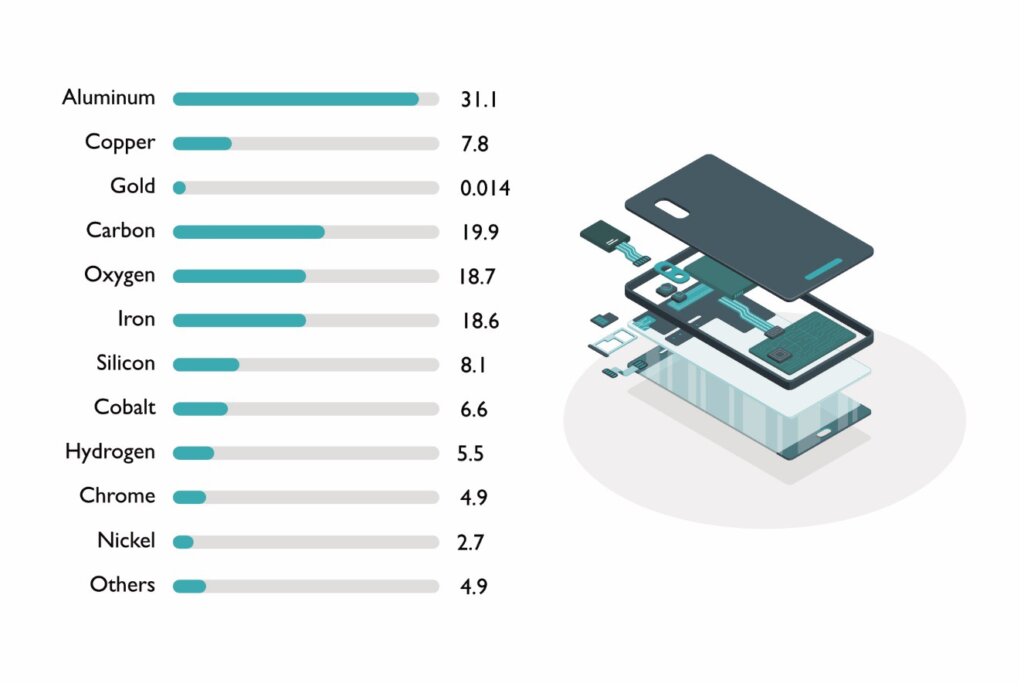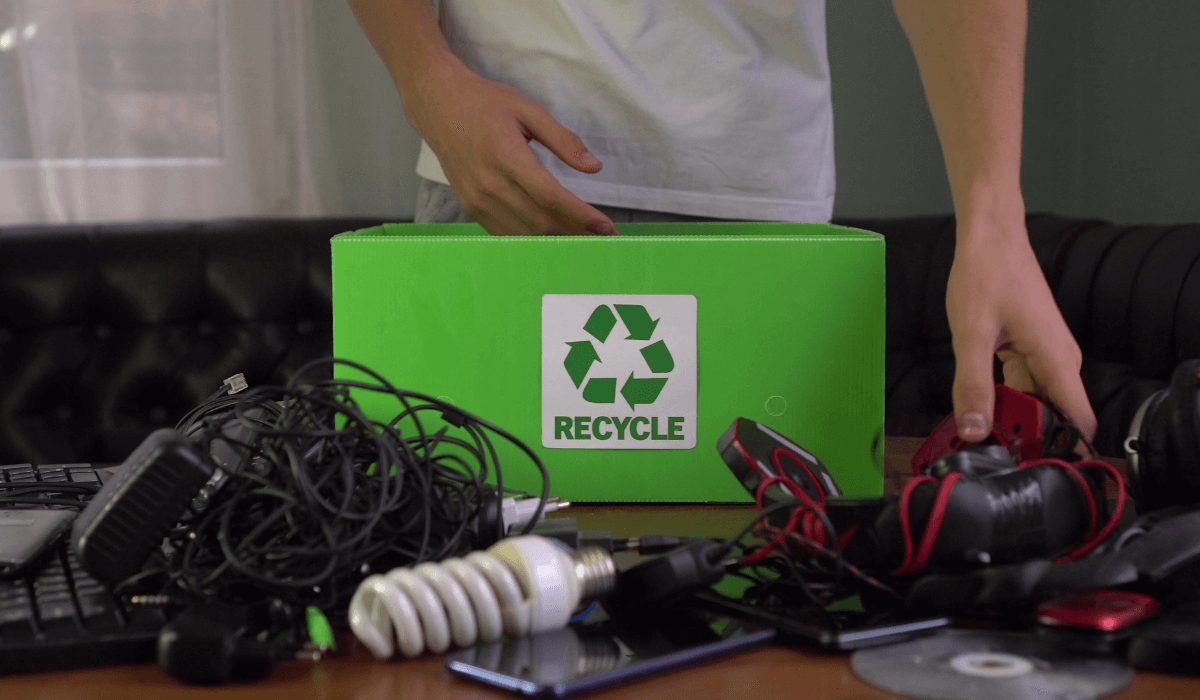Recovering Noble Metals
Apple made an audacious announcement in 2017, publicly stating a goal to eliminate mined rare earth elements from its iPhones. Stating such a goal, without a concrete plan to achieve it, was unheard of coming from the usually secretive Apple.
It still isn’t clear how Apple will manage to remove mined metals from its phones, especially given the relatively short product development timeline. The technology to produce rare earth metals without mining is not ready to handle the enormous volume of materials that a company like Apple requires.
Still, Apple’s goal is laudable. Urban mining, which keeps electronics out of landfills and sends the items to e-waste recycling facilities, can be the route that enables such a shift. The trick is to improve the e-waste infrastructure and create economies of scale so that all the metals needed to make the next generation of electronics can be recovered at a reasonable cost.
Electronic devices contain dozens of different materials, which is a big part of the challenge in making e-waste processing cost-efficient. An experiment in 2017 shredded an iPhone 6 to discover what it was made of. The phone contained 129 grams of metals, including 0.014 grams of gold.
Based on the gold price in November 2023, an iPhone 6 contains less than a dollar’s worth of gold. Statements saying that smartphones contain $3 worth of gold are exaggerated. Still, recovering gold and other precious metals from waste streams is worth pursuing.

Less Toxic Gold Extraction
E-waste processing commonly involves grinding printed circuit boards (PCBs) and melting the metals in smelters, which are high-temperature furnaces that incinerate the PCBs to recover the precious metals. Further processing refines and purifies the metals for reuse.
Smelting creates toxic particles and releases these highly carcinogenic particles into the air. At responsible recycling facilities, the workers wear respirators to protect themselves, unlike at unregulated places where workers wear no protective gear whatsoever. Still, tiny particles that cannot be captured are released into the air surrounding the processing plants.
There are other options for metal recovery. Conventional gold mining typically uses cyanide to leach the gold from ore. Because cyanide is highly toxic, the more environmentally responsible mining companies have switched to other solvents. One of these is thiosulfate, a nontoxic and highly effective alternative.
Leaching is a possibility for e-waste processing. Cyanide is just as problematic as it is in gold mining and is often prohibited because of environmental e-waste recycling regulations. Researchers in Korea used thiosulfate with copper catalysts to recover over 99 percent of the gold from waste PCBs. Although this experiment was done on a small scale, it is encouraging to see efforts to make e-waste processing less toxic.
Recovering other Metals
Copper can be recovered during e-waste processing. There are other options under consideration for recovery during the manufacturing process. Electroplating wastewater contains valuable metals. The problem is that processing the wastewater using conventional electrochemical methods is expensive and inefficient. It also produces toxic sludge. Filtering is less toxic but also not cost-effective.
One fascinating option is using biomaterials as reagents. Plant extracts can reduce metal ions and produce nanoscale metal particles. This technology is still in its early stages and hasn’t been studied with the semiconductor packaging industry in mind. The example of silver electroplating wastewater used extracts from palm leaves, so that might not be a sustainable long-term answer. Even if it isn’t a realistic solution today, it is still creative and worthy of further investigation.
Reliability Concerns
When using recycled materials, performance and reliability are valid concerns. Do recycled materials perform as well as virgin materials? Do contaminants cause yield problems? The answers depend on the application and processing conditions. Recycling epoxy-based substrates into electronics-grade materials seems highly unlikely.
Unlike plastics, metals can be recycled repeatedly without losing quality. When recovering metals from semiconductor packaging, they need to be separated from one another and refined to high purity, or else reliability will suffer. Manufacturers are demonstrating that using recycled metals in these applications is possible. For example, Micron Technology tested recycled gold (Au) wire for wire bonds and found that it performed just as well as primary Au. The next step is to extend the concept to copper wires.
Newer methods of e-waste processing and metal recovery might expand the availability of recycled metals for wire bonds, interconnect layers, or solders. True, there are other things that our industry can do first that can make a greater difference in the total environmental impact of electronic devices. Even so, it’s helpful to explore all angles and possibilities.
What is your company doing to accelerate the use of recycled content or rethink e-waste?
Note: This article contains excerpts from the manuscript of my upcoming book, Materials & Sustainability: Building a Circular Future.




















